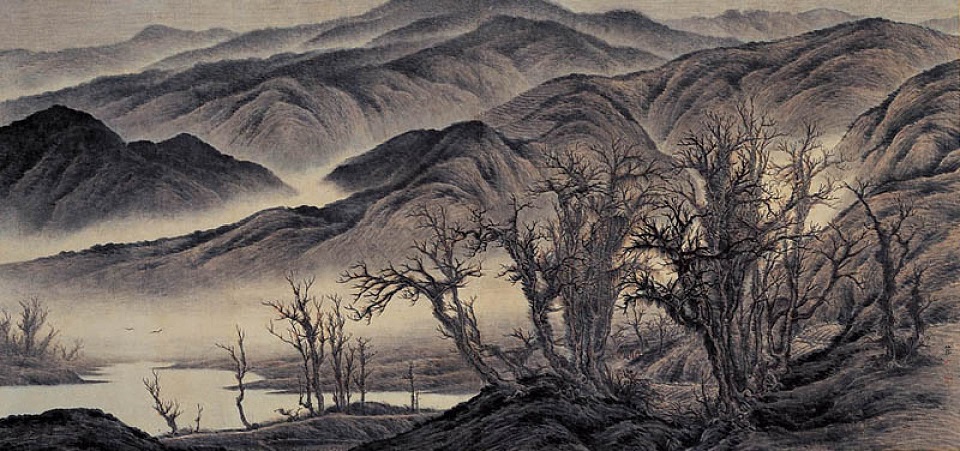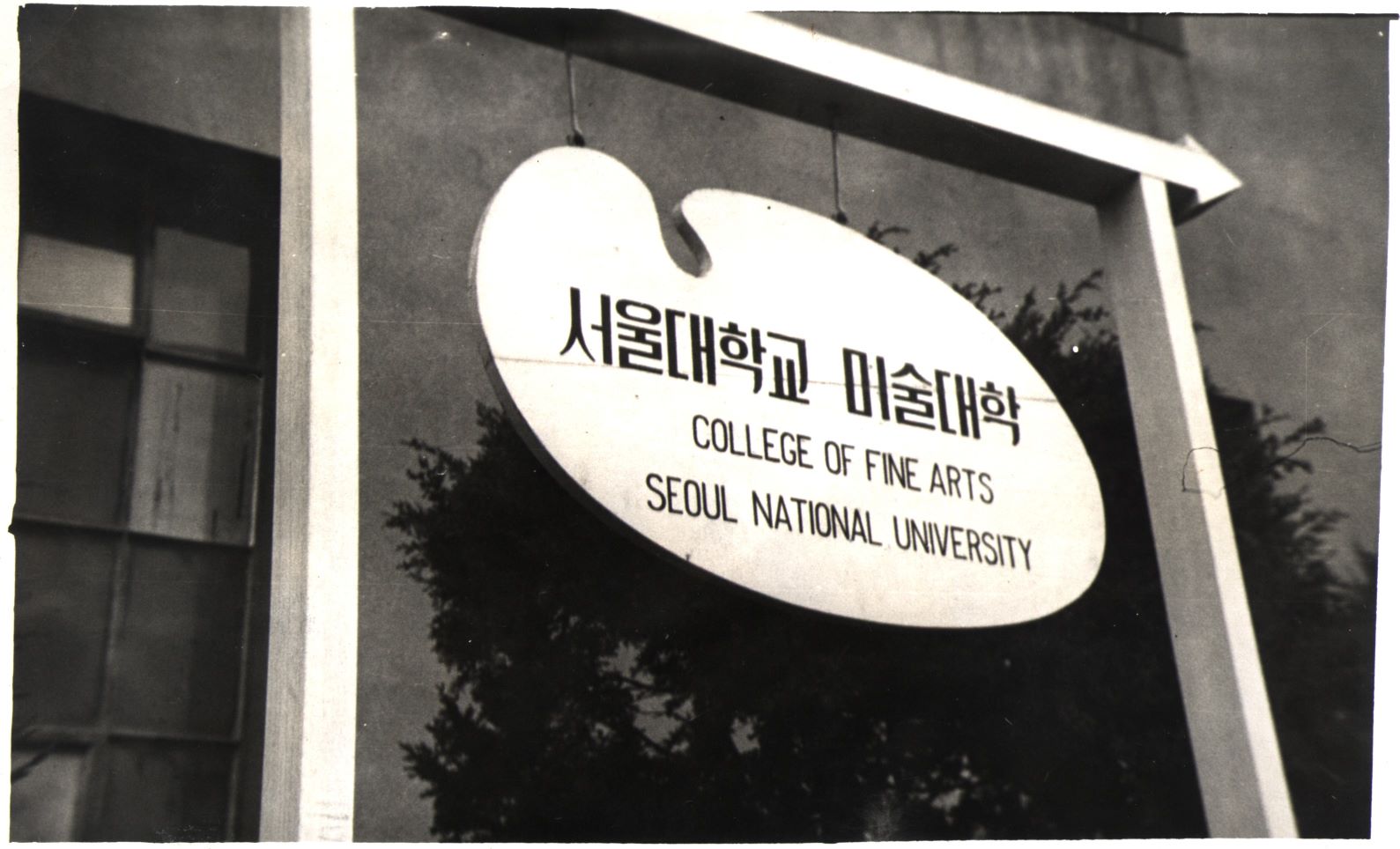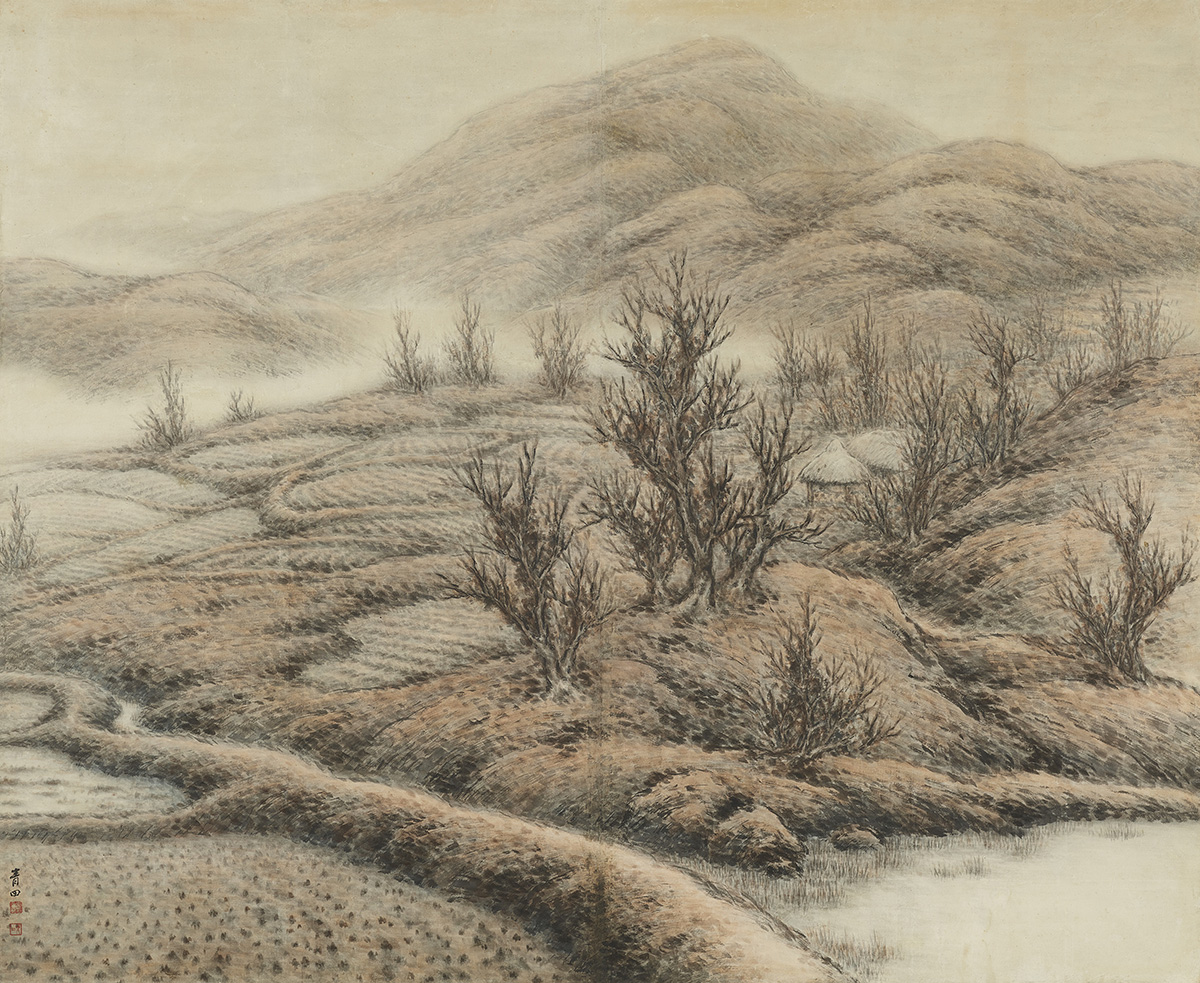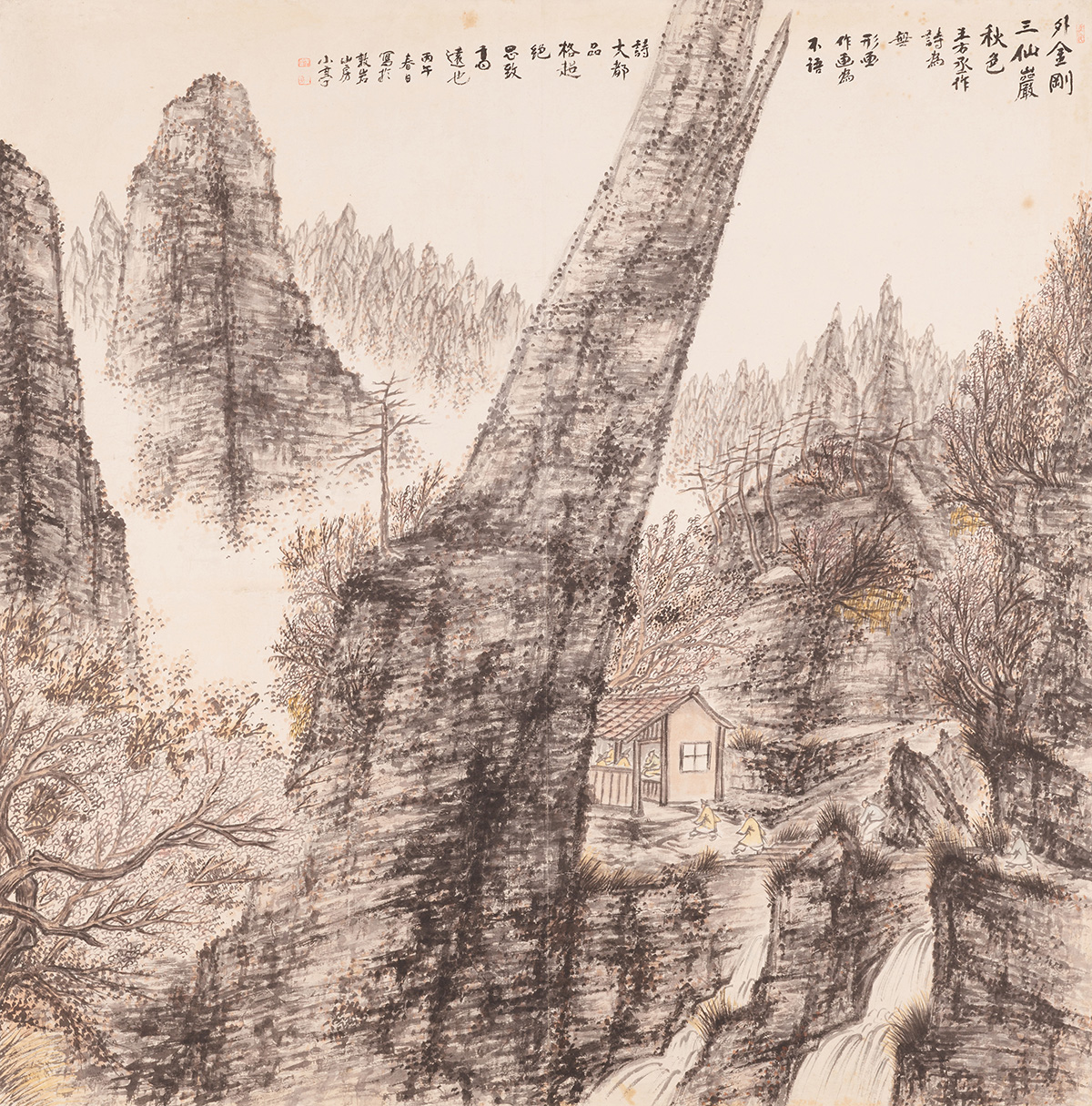
No Soohyun, Landscape, date unknown, Ink and color on paper, 110×236cm. MMCA
No Soohyun
* Source: Multilingual Glossary of Korean Art by Korea Arts Management Service
Related
-

National Art Exhibition
A government-hosted exhibition held 30 times from 1949 to 1981, also known by the shorter name Gukjeon. Following national independence, the exhibition was the primary means for young and emergent Korean artists to achieve recognition. The influence of the exhibition declined as a result of the emergence of non-figurative art during the 1970s, the increased opportunities for artists to participate in overseas exhibitions, and the rise of private exhibitions and galleries.
-

College of Arts at Seoul National University
The College of Fine Arts of Seoul National University is located in Sillim-dong, Gwanak-gu, Seoul. According to the Decree on the Establishment of Seoul National University, the College of Art including the Department of Fine Arts and the Department of Music was founded in August 1946 at Seoul National University. The Department of Fine Arts consisted of sub-departments of Painting I, Painting II, Sculpture, and Design. It was organized by Chang Louis Pal and Lee Soonsuk. Chang Louis Pal had served as head of the Education and Management Bureau in the U.S. Army Military Government in Korea (USAMGIK) in Korea since December 1945. Lee Soonsuk assumed practical tasks as an advisor to the art section of the USAMGIK from 1946 when the Education and Management Bureau was changed to the Ministry of Culture and Education. In 1946, there were nine faculty members at the Department of Fine Arts in the College of Art: Chang Louis Pal, Kim Yongjun, Gil Jinseop, and Lee Jaehun as professors; Yun Seung-uk and Lee Soonsuk as associate professors; and Kim Whanki, Chang Woosoung, and Lee Byeonghyeon as assistant professors. However, after the incident of Korean students and professors’ protest against the U.S.’s attempt to merge several colleges and universities into a single university, Kim Yongjun, Gil Jinseop, and Kim Whanki resigned. In 1954, the College of Art was reorganized into the College of Fine Arts with three departments of painting, sculpture, and applied art. The Department of Aesthetics, which had temporarily belonged to the College of Fine Arts since 1948, was transferred to the College of Liberal Arts and Sciences in 1960. In 1963, according to the relocation plan of the Seoul National University main school building, the College of Fine Arts was moved to the former veterinary department building in Yeongeon-dong, Jongno-gu. In 1972, it was moved to the liberal arts department building in Hagye-dong, Seongbuk-gu, and then in 1976, to the current Gwanak campus. In 1981, the three departments of painting, sculpture, and applied art were reorganized into the five departments of Eastern painting, Western painting, sculpture, crafts, and industrial art. In 1989, the Department of Industrial Art was renamed the Department of Industrial Design, and in 1999, the Department of Crafts and the Department of Industrial Design were merged into the School of Design. Currently, the College of Fine Arts consists of the Department of Oriental Painting, Department of Painting, Department of Sculpture, Department of Craft, Department of Design, and Interdisciplinary Programs.
-

Lee Sangbeom
Lee Sangbeom (1897-1972, pen name Cheongjeon) learned painting from An Jungsik and Cho Seokjin at the Calligraphy and Painting Society [Seohwa misulhoe] and graduated in 1918. He became a member of the Calligraphy and Painting Association [Seohwa hyeophoe] founded in 1918 and submitted his work to the first Joseon Art Exhibition [Joseon misul jeollamhoe] in 1922. He repeatedly won special prizes and was appointed as a Noteworthy Artist and Participating Artist of Eastern painting in the Joseon Art Exhibition. In 1920, he participated in the Changdeokgung Palace mural project and created the work Samseongwanpado. He founded the Cheongjeon Art Studio to educate art students in 1933 and gained notoriety by contributing illustrations to serialized pro-Japanese newspaper novels. After independence, he was accused of being pro-Japanese, but continued to focus on his art nonetheless, becoming an important figure in art circles. In the 1950s, he created his own original ‘Cheongjeon’ style. This Korean-style landscape ink wash painting was based on real Korean scenery and represented what many consider as the essential aesthetics of Korean landscape painting. While he consistently participated in the National Art Exhibition (Gukjeon), he never hosted a solo exhibition of his own, and in terms of his teaching in the post-independence period he taught as an art professor at Hongik University.
Find More
-

Byeon Gwansik
Byeon Gwansik (1899-1976, pen name Sojeong) was born in Ongjin, Hwanghae-do. He was a grandson of the last painter of the Joseon royal family, Sorim Cho Seokjin. He attended the Calligraphy and Painting Society [Seohwa Misulhoe] in 1917 when he turned 18. In 1923, he tried to organize Dongyeonsa with Lee Yongwoo, No Soohyeon, and Lee Yongwoo to look for harmony between old and new styles, but Dongyeonsa was disbanded the following year due to financial difficulties. In 1925, he moved to Japan with Kim Eunho and sat in on classes at the Tokyo School of Fine Arts. There, he developed a new style called Shinnamhwa that incorporated Nambukjong style with western painting techniques. After his return to Korea in 1929, his last official activity was to submit his work to the Joseon Art Exhibition [Joseon misul jeollamhoe]. He left Seoul in 1937 to focus on his art exploring diverse landscapes in Korea. He uniquely depicted Korea landscapes in his painting by using multiple ink-application painting method, broken line method, and unconventional compositions. His representative works include Farm Village (1957), Muchangchunsaegdo, and Oegeumgangsamseonamdo (1970).
-

Six Masters of Eastern Painters
The Six Masters were Huh Baeklyun, Kim Eunho, Park Seungmoo, Byeon Gwansik, Lee Sangbeom, and Noh Soohyun, all featured in the Six Eastern Painters Exhibition held by the Seoul Sinmunsa Newspaper Company in December 1971. Of the Ten Masters who were active in the 1940s, these six were the only artists alive at the time of the exhibition.
-

Ahn Sangchul
Ahn Sangchul (1927-1993, pen name Yeonjeong) is a painter who pioneered the expressive realm of Korean painting with his experimental work. He graduated from the Department of Painting at Seoul National University. In 1953, his last year of university, Ahn received an honorable mention for his Late Autumn at the Second National Art Exhibition (Gukjeon). His Field and Transquility won the Minister of Education Award in 1956 and 1957, respectively. Moreover, his The Remaining Snow and Clear Day earned him a Vice-Presidential Award and a Presidential Award in 1958 and 1959, respectively. Ahn learned traditional landscape painting from Noh Soohyun, Chang Woosoung, and Bae Ryeom at the university. However, his bold compositions and his drastic wielding of ink and brush in combination with Western visual principles brought attention to his Eastern-style paintings that broke away from traditional paintings. Ahn sought the modernization of Eastern painting by actively embracing Art Informel pursued by Korean painting circles in the 1950s. From the 1960s onward, he produced abstract paintings, such as Full of Charming Dreams (1960) and Mong Mong Chun (Spring in hazy dreams) (1961). Later, he continued to experiment with objets and materials like stone or kraft paper and released the three-dimensional, abstract Spirit series that transcended the flatness of painting. He served as a judge for Gukjeon and a member and chairman of its operating committee. He was the youngest Gukjeon judge. He also worked as a professor at the Seorabeol University of Arts and Sungshin Women’s University.






